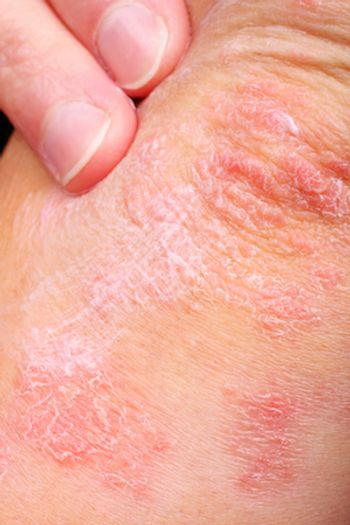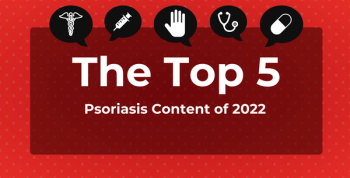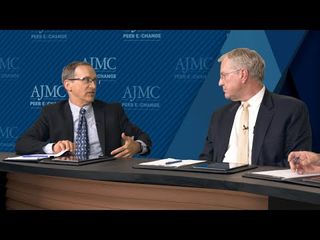
Psoriasis
Latest News
Latest Videos

CME Content
More News

Bruce Sherman, MD, FCCP, FACOEM, and Maria Lopes, MD, MS, discuss how organizations can address disparities in care for psoriasis.

Maria Lopes, MD, MS, reviews some challenges surrounding access to care, patient education, and financial burdens associated with psoriasis across skin phototypes.

Amy McMichael, MD, discusses ways to ensure patients of all races and ethnicities are experiencing the same level of quality face-to-face interactions with their providers.

The subset of patients with psoriatic arthritis had the highest odds ratio of migraine.

Findings from the survey suggest that certain symptoms of depression could help identify patients vulnerable to both worsening psoriasis symptoms and disease-related quality of life (QoL).

Maria Lopes, MD, MS, reviews how to educate providers on the risks and burdens of psoriasis and how to improve early diagnosis and treatment for all skin phototypes and ethnicities.

Bruce Sherman, MD, FCCP, FACOEM, underlines how to support patients financially to afford therapies and maintain adherence.

A study attempted to see how symptoms affect quality of life after adjusting for confounding factors.

The exact reasons for the links are not yet clear, although some evidence suggests inflammation plays a role.

Amy McMichael, MD, and Maria Lopes, MD, MS, review the major differences in quality of life, the impact on patients, and the costs and burdens associated with absenteeism or presentism.

Amy McMichael, MD, explores why psoriasis can substantially affect quality of life more severely in some ethnicities more than others.

Bruce Sherman, MD, FCCP, FACOEM, explores how to improve treatment for psoriasis and education surrounding diagnosing psoriasis for all skin phototypes.

Amy McMichael, MD, and Maria Lopes, MD, MS, review factors to evaluate when starting treatment and how to educate patients on the possible adverse events from that treatment.

After a delayed lag period, air pollution from a wildfire was associated with modestly increased rates of clinic visits for psoriasis among adults starting 5 weeks after the fire and peaking at 8 to 9 weeks after the fire.

Female patients and people younger than 18 years were particularly sensitive to pollution levels, this study found.

Following COVID-19–related lockdown measures, preferences for the use of biologics among Japanese patients with psoriasis addressed administration route, visits, and risk of serious infections requiring hospitalization, with some differences observed between specific subgroups.

Abstract findings presented at the 2022 American Academy of Dermatology Annual Meeting showed that patients with moderate to severe psoriasis achieved improvement in work-/study-related productivity with tildakizumab vs placebo after only 2 doses.

Findings of a Mendelian randomization analysis showed that greater body mass index as a child and adult and incidence of smoking were associated with an increased risk of psoriasis, whereas having more education was cited as a potential protective factor against development.

Approximately 14,280 more US patients with psoriasis were estimated to initiate a biologic in Spring than in other seasons, and over 840 more biologic users switched in Spring than in Winter.

This year’s most-popular content on psoriasis include research regarding disparities and socioeconomic factors that impact psoriasis treatment and an interview on shared decision making.

Bruce Sherman, MD, FCCP, FACOEM, underlines the impact of health inequities for patients diagnosed with psoriasis.

Maria Lopes, MD, MS, provides an overview of the PASI scoring system.

Amy McMichael, MD, discusses the impact of psoriasis on a patient’s quality of life.

Ryan Haumschild, PharmD, MS, MBA, leads a panel discussion highlighting the current prevalence of psoriasis.

Diagnoses of psoriatic arthritis, rheumatoid arthritis, axial spondyloarthritis, or undifferentiated inflammatory arthritis saw a dramatic decline during the early stages of the COVID-19 pandemic.













































